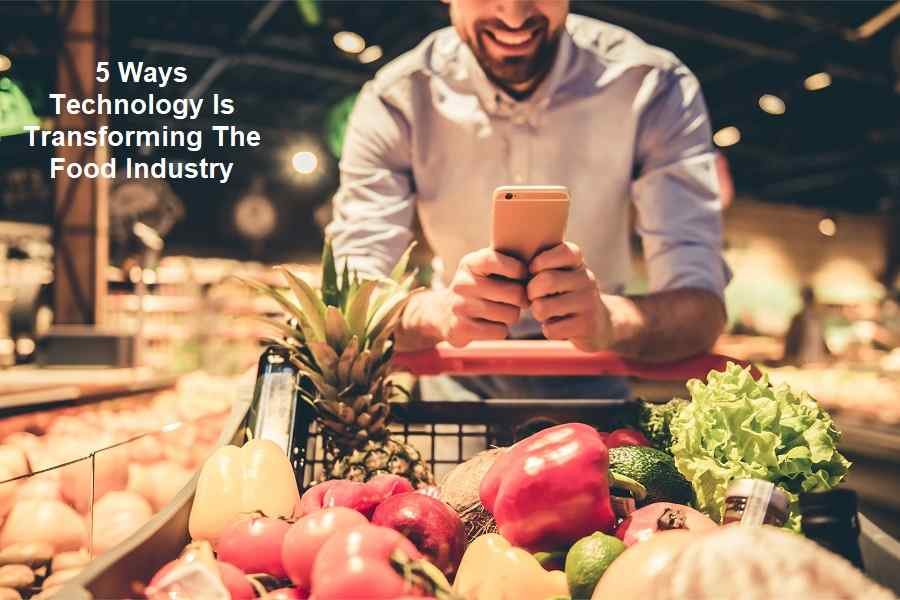
According to the United Nations, the world population will increase to 8.5 billion in a decade. But securing sufficient food for everybody remains a big challenge. Scientists across the world have stressed an urgent need to increase food production. Erratic climate patterns such as untimely rain, floods, and drought have further endangered food production.
Moreover, the COVID pandemic has disrupted the food systems locally and internationally. We need to make supply chain systems resilient and find ways to reduce food wastage.
Also, small farmers require a guaranteed income and the food systems should be more transparent. Due to alarming threats of lifestyle diseases, people become health conscious and are opting for healthier stuff. The food industry is leaning more towards technology to find solutions and meet the current and future challenges. Check below for the ways to harness the potential of technology for enhancing the food industry.
-
Technical advancements in farming:
Today we have robots that could do farming activities like plowing, examining plants for diseases, sowing seeds, and planting the saplings. It is possible to pinpoint the plants with pests, and the bots sprinkle pesticides only on those. Thus we can avoid blanket spraying,
reduce wastage of chemicals, and prevent pollution too. Combined technologies like AI, IoT (Internet of things), and analytics can control growth factors like soil pore size, water requirement, etc. Predictive analytics can help farmers with the right quantity of yield, fertilizers, availability of new seeds, and warn them regarding weather conditions. Growing indoor plants, vertical farming, and hydroponics are highly useful for urban areas. Though agriculture is labor-intensive, modern machines and technologies can replace most of the manual work. Moreover, it results in precision agriculture as a drone can examine acres of plants quickly and give instant feedback.
-
A robust supply chain system and better storage:
Agri products and livestock products are perishable. Therefore efficient storage and supply chain systems are crucial for the food industry. Moreover, at times small farmers are unaware of market price and end up making losses. Every year, almost a third of the food produced gets wasted due to poor storage and delayed transportation. But with the rise of digital technologies, faster communication is possible among farmers, traders, and consumers via mobile apps and e-commerce platforms. There is more price transparency, and demand forecast information is available to all the people involved like farmers, wholesalers, and shopkeepers. Governments and private companies provide cold chain facilities and blast freezing techniques to farmers. New ways of increasing shelf life, such as genetic modification and chemical vapors, are available today.
-
Advanced food packaging technologies:
More and more people are buying food items from online stores. Thus the need for packaging has increased manifolds. But it also produces a lot of plastic waste. Moreover, people are concerned about the quality of the food.
We have robots and sensor-based machines for boxing, palletizing, and warehouse activities. So, the environment-friendly packaging material such as biodegradable material and recyclable plastics is the need of the hour. Now we have transparent packages with smart labels that could give value for parameters like pH, temperature, fermentation level, etc., to the customers through mobile scanning. The packaging industry also strives to make it attractive and convenient for customers. For example, boxes come with hooks and handle, locking, and sealing facilities. And, now, research work is going on to make edible packages.
-
Robots in the kitchen:
Imagine a machine that could flip burgers, make pizzas, and concoct brandy cocktails. And, it need not be in the fantasy world alone. Now we have robots that could cut vegetables, chop meat, knead flour, and deliver food to the table. And, even in restaurants, robotic kitchens are becoming popular. The machines can handle hazardous situations better, and there is no fear of getting infected. These exhibit quick adaptability and prepare any amount of food in no time. They are self-cleaning too. With artificial intelligence, these machines continually learn from the inputs and responses provided. There is consistency in taste, and people supervising the process can adjust settings to make variations based on customer requirements. In the longer term, using robots for cooking is more economical than employing cooks. For household use, the robotic cookware is more reliable. You need not wait for a maid to come home. There is an increased preference for machine-based cooking as it is more hygienic, which is a must in these pandemic times.
Another rapidly growing technology in the food industry is 3D printing. Companies utilize it for making printed meat, pizzas, pastries, cupcakes, etc. It is also possible to try new recipes and personalize too.
-
Using blockchain technology:
Counterfeiting poses one of the main challenges to the food industry. It is a problem for farmers, manufacturers, and retailers. Older methods like labels, holograms, and paperwork by authorities at various transportation stages are not foolproof, and the process is time-consuming. Delays, in the case of perishable goods, are not much affordable. So the tracing process has to be quick and authentic. By utilizing blockchain technologies, it is possible to track the movement of food items from the farm to the fork. It is possible to detect any malpractices by brokers or during transportation immediately. Also, cost and pricing data at each stage are available to the authorities. Shop-keepers, company owners, and the farmers get a real-time view of demand and supply of the product.
To sum up:
For the food industry, the customer base is the entire global population of 7.8 billion. But there are challenges in production, distribution, and quality regulation. Moreover, today’s consumers want convenient food that is tasty, healthy, and sustainable. With the help of agri-tech innovations, the industry strives to reduce water usage, prevent deforestation, and cut greenhouse gas emissions. Moreover, there is an increasing demand for organic food with no added chemical pesticides and fertilizers. People want plant-based alternatives for high-calorie food items like dairy and meat. Now technology plays a crucial role in meeting modified industry requirements and coming up with breakthrough innovations.


